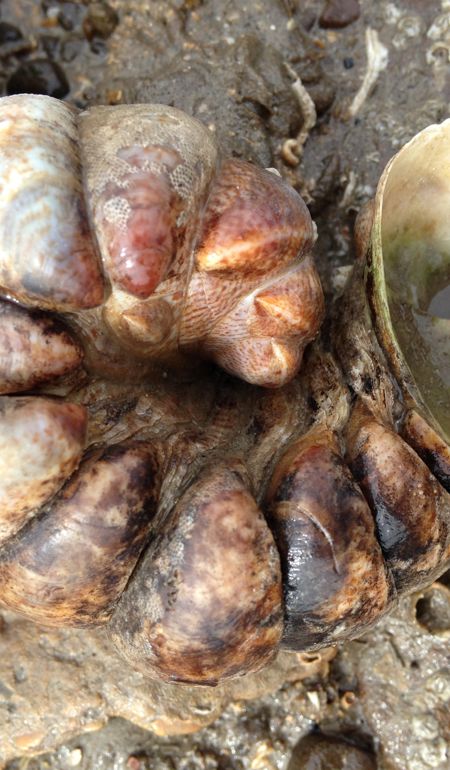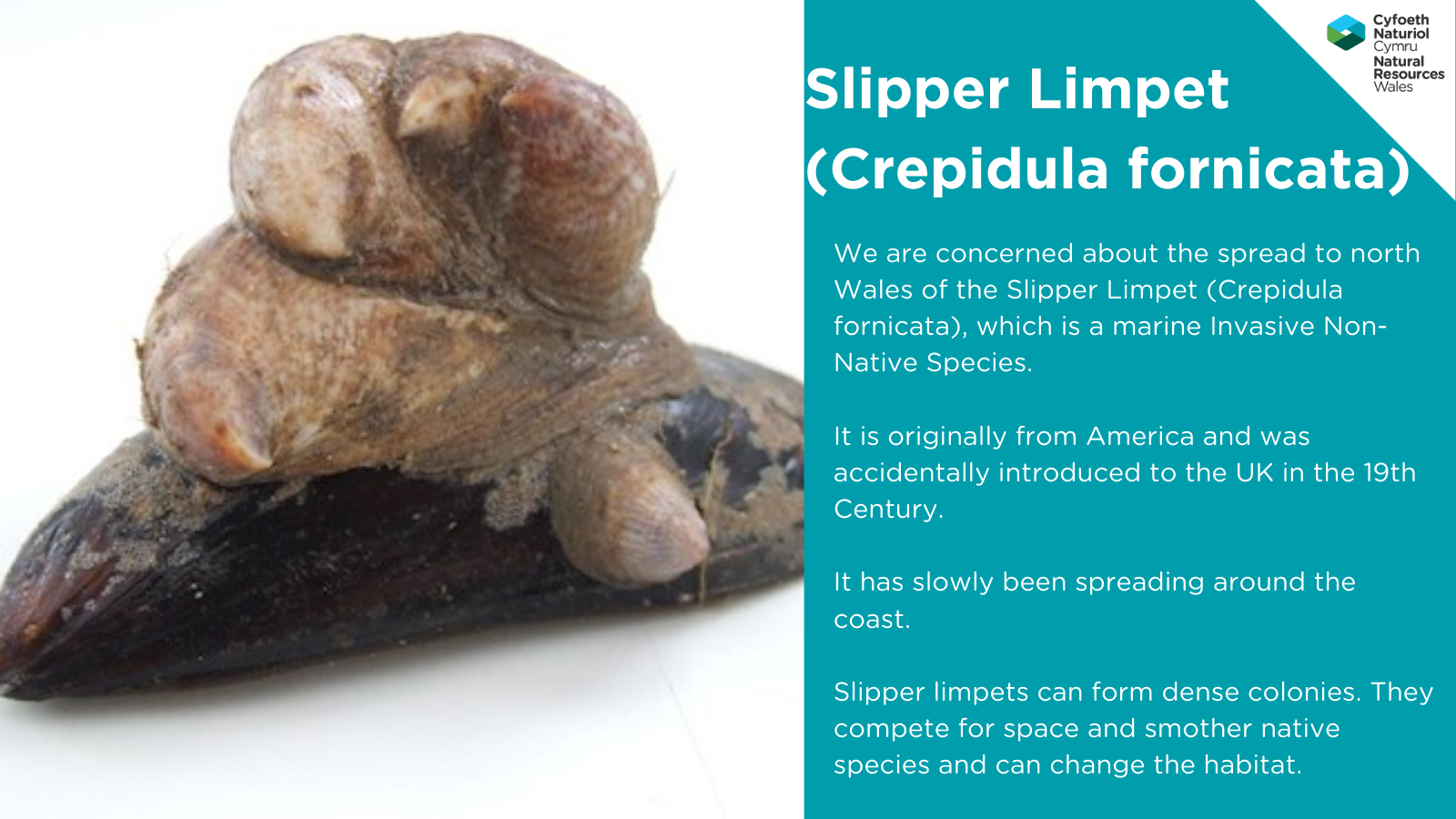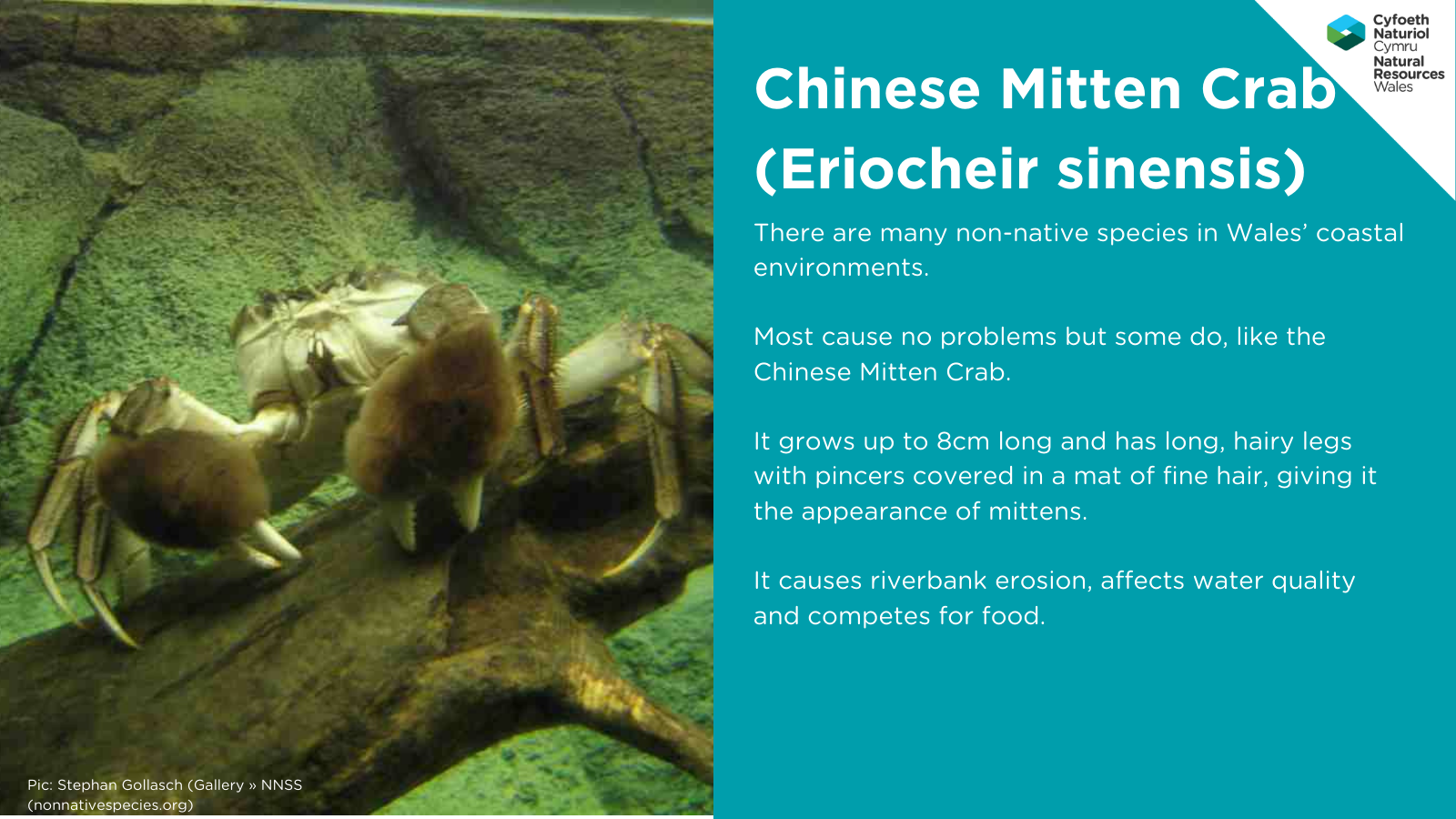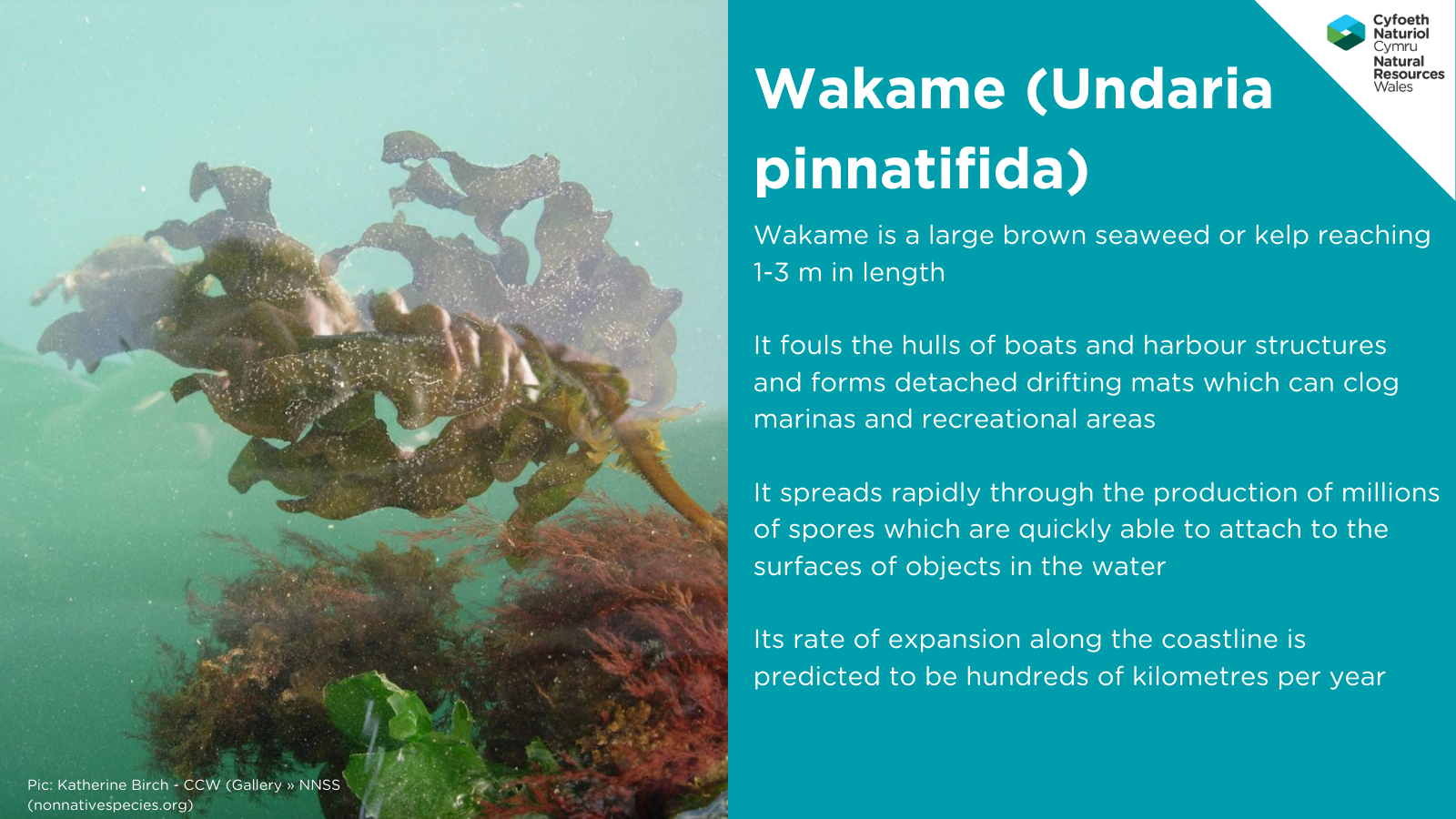Biosecurity planning to prevent invasive species in six of Wales’ Marine Protected Areas

Every 8 June, World Ocean Day is celebrated, and as part of Natural Resources Wales’ efforts to provide healthier and more resilient habitats and species, NRW is leading on work to reduce the risk of marine invasive non-native species arriving and spreading in six of our marine protected areas. Holly Peek and Chloe Powell Jennings explain:
With around 2,750 kilometres (1,700 miles) coastline, Wales is home to a myriad of native sea creatures and wildlife, but we are also seeing more non-native species establishing themselves in our waters.
Some are harmless but there are some species which are not, and these are known as Invasive Non-Native Species (INNS for short) because of the threat they pose to our native wildlife and habitats as well as the impacts they can have on our economy and wellbeing.
As part of Natural Resources Wales’ work to try to prevent and manage these INNS in our marine environments, we are leading a project with a particular focus on putting biosecurity plans in place at six Marine Protected Areas across Wales to minimise the risk of INNS arriving and spreading.
This work is part of the Welsh Government-funded Nature Networks programme which was set up to help tackle the nature emergency and strengthen the resilience of Wales’s protected land and marine sites.
We have a good idea of which marine invasives are present in Wales and we also have a good understanding of the potential impacts that they have on our native habitats and species.
Now we need to help prevent marine INNS from arriving in the first place and spreading further in Wales.
There are many ways in which marine INNS can arrive in Wales including arriving on the hulls of boats, in ballast water, as stowaways, brought in with aquaculture stock, through deliberate or accidental release and even attached to wet gear or kit from sporting or recreational activities.
In fact, it can sometimes only take a drop of water to spread a marine INNS to a new place as they can also be spread through larvae, eggs and small fragments.
These invasive non-native species can establish quickly and spread rapidly often causing harm to native species through habitat degradation, predation, competing for space and food and sometimes introducing disease.
As part of the marine Invasive Non-Native Species Biosecurity Planning project, we will undertake research which we will use to create biosecurity plans which we will put in place in six of Wales’ Marine Protected Areas - Dee Estuary SAC, Menai Strait and Conwy Bay SAC, Cardigan Bay SAC, Pembrokeshire Marine SAC, Carmarthen Bay and Estuaries SAC and the Severn Estuary SAC.
We will build on the work already done for biosecurity planning in Pen Llyn a’r Sarnau SAC working with key stakeholders to take practical steps to reduce the risk of introducing and spreading invasive species.
Preventing invasives from arriving in the first place is by far the best thing we can do and especially in marine environments because if something gets in and takes hold, it can be really hard to get rid of it.
Some of the Invasive Non-Native Species which are of concern in Wales’ marine environments include:

Slipper Limpet – originally from America it was introduced in the 19th Century attached to oysters and has been spreading around the coast. It forms dense colonies, with individuals stacking up on top of each other. They compete for space and smother native species and can change the habitat completely. The species has slowly been spreading around the coast with concerns about the spread in North Wales.

Chinese Mitten Crabs – is a hairy clawed crustacean that can cause damage to riverbanks, compete with native species, block water outlets and damage fishing gear such as nets with their claws. They live in rivers, canals and estuaries. Originating in South East Asia, the first mitten crab was recorded in the UK in 1935. The first record of Chinese mitten crab in North Wales was made in the River Dee in 2006. They eat fish eggs and females are able to brood 250,000 – 1 million eggs at a time.

Wakame - Wakame is a large brown seaweed or kelp reaching 1-3 m in length. It fouls the hulls of boats and harbour structures and forms detached drifting mats which can clog marinas and recreational areas. It spreads rapidly through the production of millions of spores which are quickly able to attach to the surfaces of objects in the water. Its rate of expansion along the coastline is predicted to be hundreds of kilometres per year.
